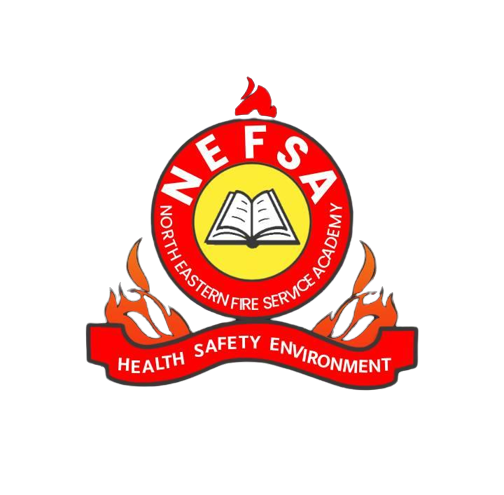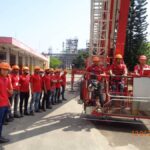Choosing a career at NEFSA (North Eastern Fire Service Academy) is more than learning to fight fires it’s a path to a stable, respected profession that serves communities and industries across India. With serious shortages in fire infrastructure and growing regulatory pressure on safety compliance, skilled fire professionals are urgently needed. NEFSA trains you with government-aligned courses, hands-on drills and modern simulation tools that employers value.
1. Demand is real – why employers want trained fire professionals?
Multiple recent reports show severe staffing and infrastructure gaps in India’s fire services — creating strong demand for trained personnel in municipal services, government institutions, large industries, healthcare and private safety firms. For example, city-level reports show huge vacancies in sanctioned firefighter posts, and industry bodies warn of a near-nationwide shortfall in fire infrastructure. That gap translates into job opportunities for qualified graduates.
2. NEFSA: what it is and what it offers
NEFSA (North Eastern Fire Service Academy), established in Dibrugarh, Assam, provides short-term and long-term courses designed to produce operational firefighters, safety officers and trainers. The academy’s curriculum blends classroom theory, live-fire practicals and placement support for graduates making it a practical choice for people starting a fire-safety career in the northeast and beyond.
3. Courses & certifications that build a career ladder
Typical training pathways at NEFSA and other recognized Indian fire institutes include:
-
Basic Firefighter / Fireman courses (entry-level operational skills)
-
Station Officer / Supervisory courses (leadership & incident command)
-
Specialist short courses (Breathing Apparatus, HazMat, Water Based Fire Protection design) often run by the National Fire Service College (NFSC) and similar institutions.
Holding recognized certificates improves your chances in government recruitments and private industry roles.
4. Practical training live drills, rescue ops & simulations
NEFSA emphasizes hands-on training: live-fire exercises, rescue and ladder drills, breathing apparatus practice and multi-agency mock drills. In addition, modern academies increasingly use simulation and VR to rehearse rare but dangerous scenarios safely. Research shows that virtual and simulation training improves decision-making, confidence and retention useful when split-second choices cost lives. These combined methods produce responders who are job-ready on day one.
5. Career tracks & salary expectations
Career options after NEFSA training include: municipal fire services (state/city recruitment), central government roles (defence establishments, ports, nuclear/DAE units), industrial safety officer roles in manufacturing and oil & gas, private security & safety firms, and training/instructor posts at academies. Government fireman salaries and pay matrices vary by employer – central/internal govt roles may offer stable pay, benefits and pensions; private industry postings often add higher allowances depending on location and risk profile. (See recent job listings and recruitment notices for up-to-date openings.)
6. Why NEFSA graduates stand out – recognition & placement focus
NEFSA positions itself to deliver government-aligned training and placement assistance. Graduates benefit from recognized certifications, scenario-based competence, and exposure to leadership modules (incident command systems) that employers especially municipal and industrial safety teams require. NEFSA’s placement page and alumni links show the academy’s intent to connect trainees with real opportunities.
7. How to make the most of your NEFSA training (action plan)
-
Choose the right entry course — start with a basic firefighter/fireman program, then progress to supervisory modules.
-
Complete specialist certifications (Breathing Apparatus, HazMat, Water-based systems) to widen employability.
-
Focus on physical fitness & medical standards – most recruiters require fitness tests and medical clearance.
-
Practice scenario drills regularly – the more live practice you have, the faster you perform under pressure.
-
Apply widely – track municipal, central and industrial recruitments; use placement support from the academy.
8. The broader impact serve your community and build respect
A fire & safety career brings deep social value: protecting lives, reducing loss, improving industrial safety and building community resilience. These roles are often respected locally and offer long-term stability especially when combined with government employment benefits or specialized industry roles. In short: it’s a career with purpose, stability and respect.
Conclusion
If you want a hands-on, stable and impactful career, NEFSA offers a proven pathway: recognized courses, practical training, and links to real job opportunities. With the country facing staffing and infrastructure gaps in fire services, qualified professionals are in demand and NEFSA helps you become one of them. Take the first step: review course schedules, prepare for fitness & medical checks, and apply for the intake that fits your goals.
Sources
-
NEFSA (North Eastern Fire Service Academy) – official site, courses & placement. nefsaindia.com+1
-
National Fire Service College (NFSC) – short & specialized courses (Breathing Apparatus, HazMat, Water-based system design). nfscnagpur.nic.in+1
-
NDMA – national disaster & fire safety guidance (preparedness, smoke alarms, training emphasis). National Disaster Management Authority+1
-
Times of India reporting – staffing shortages and national fire infrastructure shortfall (demand context). The Times of India+1
-
Research on VR & simulation effectiveness in firefighter training (peer literature & studies).







